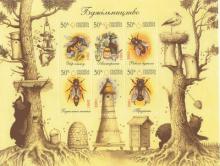Ctgb wijst verzoek tot intrekking toelating 5 neonicotinoiden deels af
In oktober 2012 vroeg de organisatie PAN Europe het College voor de toelating van gewasbeschermingsmiddelen en biociden (Ctgb) om de toelating van 6 gewasbeschermingsmiddelen en 1 biocide in te trekken in verband met de risico’s voor waterorganismen en geconstateerde overschrijdingen in het oppervlaktewater. Lopende de behandeling van dit verzoek verscheen een nieuw rapport van Alterra. Het Ctgb heeft deze nieuwe gegevens niet alleen betrokken bij de behandeling van het verzoek van PAN Europe, maar ook is onderzocht of deze studie geen gevolgen zou moeten hebben voor andere toelatingen op basis van imidacloprid. Dit heeft geleid tot een zienswijzeprocedure naar aanleiding van het voornemen van het Ctgb om in te grijpen in een drietal toelatingen.










